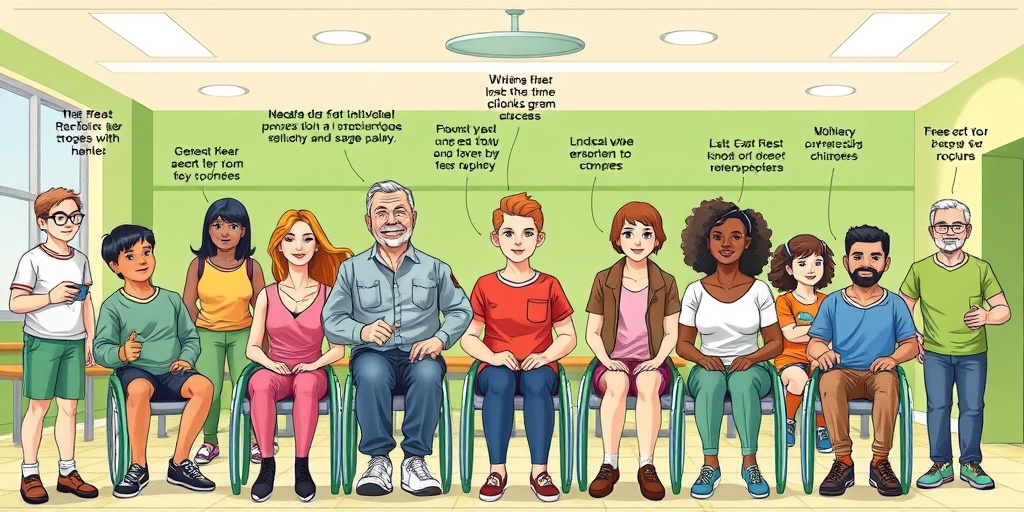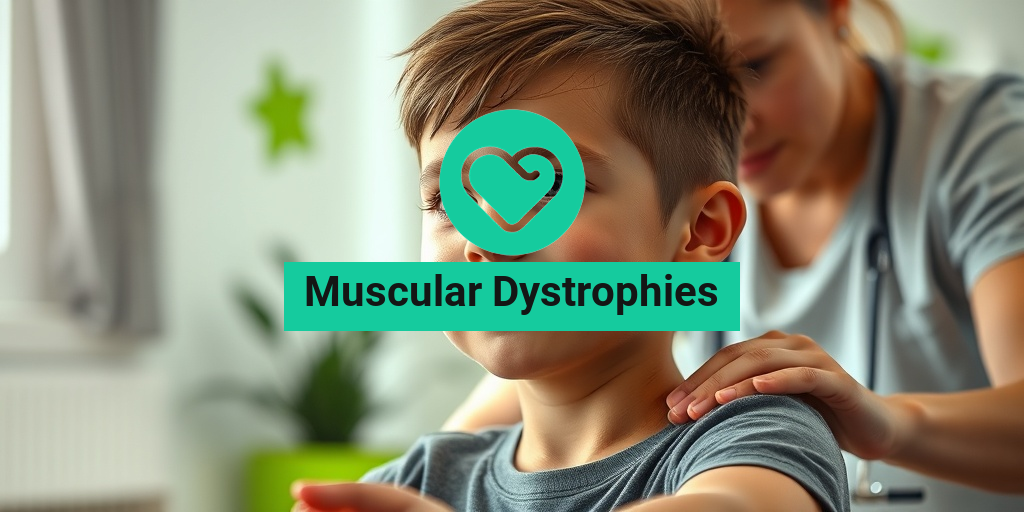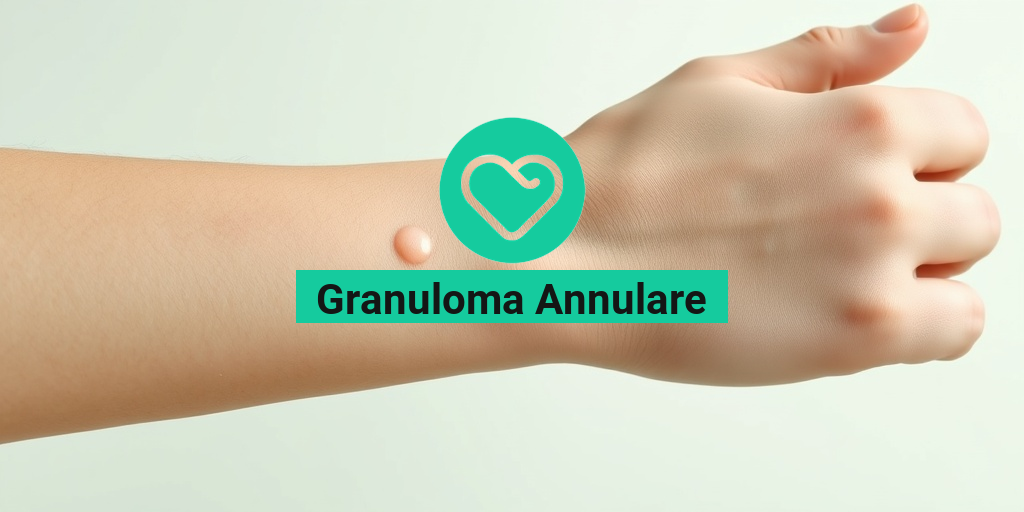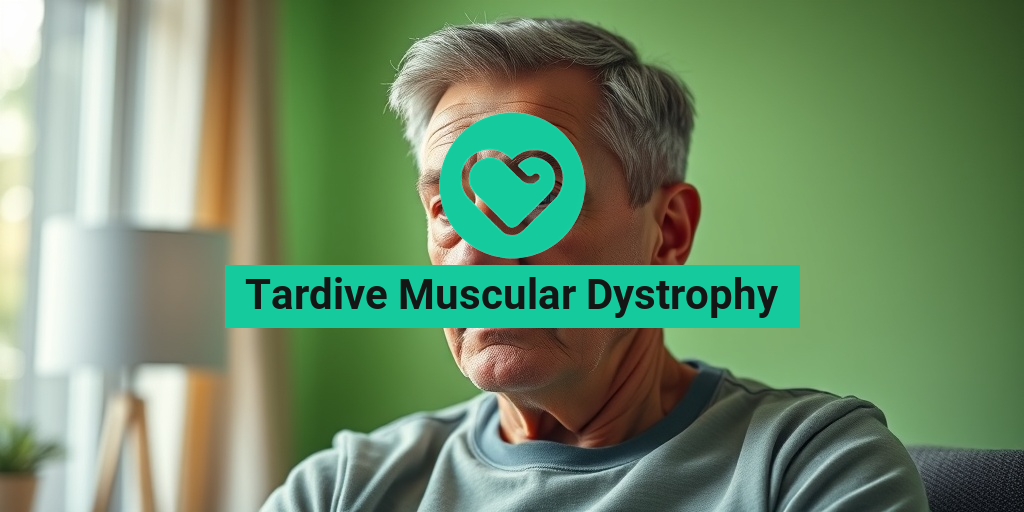What Are Muscular Dystrophies?
Muscular dystrophies are a group of genetic disorders characterized by progressive weakness and degeneration of the skeletal muscles that control movement. These conditions are caused by mutations in the genes responsible for the structure and function of muscle fibers. As a result, individuals with muscular dystrophies experience a gradual loss of muscle mass and strength, which can significantly impact their mobility and overall quality of life.
The term “muscular dystrophy” encompasses a variety of specific disorders, each with its own unique symptoms and progression. While the severity and age of onset can vary widely, the common thread among all types is the progressive nature of muscle weakness. Understanding muscular dystrophies is crucial for early diagnosis and intervention, which can help manage symptoms and improve life expectancy.
Symptoms of Muscular Dystrophies
Symptoms of muscular dystrophies can differ based on the specific type and the age at which they manifest. However, some common symptoms include:
- Muscle weakness: This is often the first noticeable symptom, typically affecting the proximal muscles (those closest to the center of the body).
- Difficulty walking: Many individuals may experience trouble with balance and coordination, leading to frequent falls.
- Muscle wasting: Over time, affected muscles may shrink in size, leading to a noticeable change in muscle tone.
- Fatigue: Individuals may feel unusually tired after physical activity due to the inability of their muscles to function effectively.
- Joint contractures: Tightening of muscles and tendons can lead to limited range of motion in joints.
As the condition progresses, individuals may require assistive devices such as wheelchairs or braces to aid mobility. It’s essential to consult healthcare professionals for a proper diagnosis and management plan if you or a loved one experiences these symptoms.
Types of Muscular Dystrophies
There are several types of muscular dystrophies, each with distinct characteristics and genetic causes. Here are some of the most common types:
Duchenne Muscular Dystrophy (DMD)
Duchenne muscular dystrophy is one of the most prevalent forms, primarily affecting boys. Symptoms typically appear between the ages of 2 and 6, starting with difficulty in walking and climbing stairs. As the disease progresses, individuals may lose the ability to walk by their early teens and often require a wheelchair. Life expectancy for those with DMD has improved with advancements in care, but many still face significant health challenges.
Becker Muscular Dystrophy (BMD)
Similar to DMD, Becker muscular dystrophy is also caused by mutations in the dystrophin gene. However, BMD tends to be less severe and progresses more slowly. Symptoms usually appear in late childhood or adolescence, and individuals may retain the ability to walk into their 30s or 40s.
Myotonic Dystrophy
Myotonic dystrophy is characterized by prolonged muscle contractions (myotonia) and muscle weakness. It can affect both men and women and often presents in adulthood. This type can also impact other systems in the body, including the heart and endocrine system, leading to a range of complications.
Limb-Girdle Muscular Dystrophy (LGMD)
Limb-girdle muscular dystrophy affects the muscles around the hips and shoulders. Symptoms can appear in childhood or adulthood, and the progression varies widely among individuals. LGMD can be inherited in different ways, making genetic counseling important for affected families.
Facioscapulohumeral Muscular Dystrophy (FSHD)
FSHD primarily affects the muscles of the face, shoulders, and upper arms. Symptoms often begin in the teenage years or early adulthood and can lead to significant weakness in these areas. Unlike other types, FSHD may not always lead to complete loss of mobility.
Congenital Muscular Dystrophy (CMD)
Congenital muscular dystrophy is present at birth and can vary in severity. It often involves muscle weakness and may be associated with other neurological issues. Early intervention is crucial for improving outcomes for individuals with CMD.
Understanding the different types of muscular dystrophies is essential for effective management and support. If you or someone you know is affected by these conditions, resources like Yesil Health AI (yesilhealth.com) can provide valuable, evidence-based information to help navigate the complexities of muscular dystrophies.
In conclusion, muscular dystrophies represent a diverse group of disorders that require comprehensive care and support. Early diagnosis and intervention can significantly improve the quality of life for those affected, making awareness and education vital in the fight against these conditions. 💪

Muscular Dystrophies Symptoms
Muscular dystrophies are a group of genetic disorders characterized by progressive muscle weakness and degeneration. Understanding the symptoms associated with these conditions is crucial for early diagnosis and management. While symptoms can vary significantly depending on the specific type of muscular dystrophy, there are some common signs to look out for.
Common Symptoms
- Muscle Weakness: One of the most prominent symptoms is muscle weakness, which typically begins in the proximal muscles (those closer to the center of the body) and may progress to affect distal muscles.
- Difficulty Walking: Many individuals with muscular dystrophy experience difficulty walking, which may manifest as a waddling gait or frequent falls.
- Muscle Cramps and Stiffness: Muscle cramps and stiffness can occur, leading to discomfort and reduced mobility.
- Fatigue: Increased fatigue is common, as the body works harder to perform everyday tasks.
- Contractures: Over time, muscles may shorten, leading to contractures that limit movement in joints.
- Respiratory Issues: In advanced stages, respiratory muscles may weaken, resulting in breathing difficulties.
- Cardiac Problems: Some forms of muscular dystrophy can affect the heart muscle, leading to cardiomyopathy.
Symptoms in Adults vs. Children
While muscular dystrophies can affect individuals of all ages, the symptoms may present differently in adults compared to children. In children, symptoms often appear early, with noticeable delays in motor skills such as sitting, standing, or walking. In contrast, adults may experience a gradual onset of symptoms, which can sometimes lead to misdiagnosis or delayed treatment.
For instance, Duchenne muscular dystrophy typically manifests in early childhood, while Becker muscular dystrophy may not become apparent until later in life. Recognizing these differences is essential for appropriate management and support.
Causes of Muscular Dystrophies
The underlying causes of muscular dystrophies are primarily genetic. These disorders are caused by mutations in genes responsible for the production of proteins that are essential for muscle health. Understanding these causes can help in the development of targeted therapies and interventions.
Genetic Mutations
Muscular dystrophies are often linked to specific genetic mutations. For example:
- Duchenne Muscular Dystrophy (DMD): Caused by mutations in the dystrophin gene, which is crucial for maintaining muscle cell integrity.
- Becker Muscular Dystrophy (BMD): Also related to the dystrophin gene but involves a partially functional protein, leading to a milder form of the disease.
- Myotonic Dystrophy: Caused by mutations in the DMPK gene, leading to muscle stiffness and weakness.
Inheritance Patterns
Muscular dystrophies can be inherited in different ways:
- X-Linked Inheritance: Conditions like DMD and BMD are X-linked, meaning they primarily affect males, while females can be carriers.
- Autosomal Dominant: Some forms, such as myotonic dystrophy, can be inherited in an autosomal dominant pattern, meaning only one copy of the mutated gene is needed for the condition to manifest.
- Autosomal Recessive: Other types may require two copies of the mutated gene, one from each parent, for the disease to develop.
Environmental Factors
While genetic mutations are the primary cause of muscular dystrophies, some studies suggest that environmental factors may also play a role in the severity and progression of symptoms. Factors such as nutrition, physical activity, and overall health can influence the course of the disease.
In conclusion, recognizing the symptoms and understanding the causes of muscular dystrophies is vital for effective management and support. Early diagnosis can lead to better outcomes and improved quality of life for those affected by these conditions. If you or someone you know is experiencing symptoms related to muscular dystrophy, it is essential to consult a healthcare professional for a comprehensive evaluation and personalized care. 💪

Risk Factors for Muscular Dystrophies
Muscular dystrophies (MD) are a group of genetic disorders characterized by progressive muscle weakness and degeneration. Understanding the risk factors associated with these conditions is crucial for early detection and management. Here, we explore the various factors that may increase the likelihood of developing muscular dystrophies.
Genetic Factors
The primary risk factor for muscular dystrophies is genetic inheritance. Most forms of muscular dystrophy are caused by mutations in genes responsible for muscle function. Here are some key points regarding genetic factors:
- Family History: If a family member has muscular dystrophy, the risk of developing the condition increases significantly. Duchenne muscular dystrophy (DMD) and Becker muscular dystrophy (BMD) are X-linked disorders, meaning they predominantly affect males.
- Carrier Status: Women can be carriers of X-linked muscular dystrophies without showing symptoms. Genetic testing can help identify carriers in families.
- Other Genetic Mutations: Some forms of muscular dystrophy, such as limb-girdle muscular dystrophy, can result from mutations in various genes, making genetic counseling essential for affected families.
Age and Gender
Age and gender also play significant roles in the risk of developing muscular dystrophies:
- Age: Symptoms of muscular dystrophy often appear in childhood or adolescence, although some forms can manifest in adulthood. Early diagnosis is crucial for effective management.
- Gender: Most muscular dystrophies are more common in males. For instance, DMD primarily affects boys, while females may experience milder symptoms or be asymptomatic carriers.
Environmental Factors
While genetic factors are predominant, certain environmental factors may also contribute to the risk of muscular dystrophies:
- Infections: Some viral infections have been linked to muscle damage, potentially exacerbating symptoms in individuals with a genetic predisposition.
- Physical Activity: Although exercise is generally beneficial, excessive physical strain can lead to muscle injury in individuals with muscular dystrophies.
Conclusion
Understanding the risk factors for muscular dystrophies can empower individuals and families to seek early intervention and support. Genetic counseling and awareness of family history are vital steps in managing these conditions effectively.
Diagnosis of Muscular Dystrophies
Diagnosing muscular dystrophies can be a complex process, often requiring a combination of clinical evaluation, genetic testing, and imaging studies. Early diagnosis is essential for effective management and improving quality of life. Here’s a closer look at the diagnostic process.
Clinical Evaluation
The first step in diagnosing muscular dystrophies typically involves a thorough clinical evaluation by a healthcare professional. Key components include:
- Medical History: A detailed medical history, including family history of muscular dystrophy, is crucial. This helps identify potential genetic links.
- Physical Examination: A physical exam assesses muscle strength, tone, and reflexes. Doctors may look for characteristic signs such as muscle wasting or difficulty with movement.
Genetic Testing
Genetic testing is a definitive method for diagnosing muscular dystrophies. It involves:
- Blood Tests: A blood sample is analyzed to identify mutations in genes associated with muscular dystrophies. This can confirm a diagnosis and help determine the specific type of muscular dystrophy.
- Carrier Testing: For families with a history of muscular dystrophy, carrier testing can identify individuals who may pass the condition to their children.
Imaging Studies
In some cases, imaging studies may be used to assess muscle condition:
- Magnetic Resonance Imaging (MRI): MRI can provide detailed images of muscles, helping to identify areas of degeneration or inflammation.
- Electromyography (EMG): This test measures the electrical activity of muscles and can help differentiate between muscular dystrophies and other neuromuscular disorders.
Muscle Biopsy
In certain situations, a muscle biopsy may be performed to examine muscle tissue directly. This can help identify specific types of muscular dystrophies based on the presence of abnormal muscle fibers or proteins.
Conclusion
Diagnosing muscular dystrophies involves a comprehensive approach that combines clinical evaluation, genetic testing, and imaging studies. Early diagnosis is key to managing symptoms and improving the quality of life for individuals affected by these conditions. If you suspect muscular dystrophy, consult a healthcare professional for a thorough evaluation. 🩺

Treatment Options for Muscular Dystrophies
Muscular dystrophies (MD) are a group of genetic disorders characterized by progressive muscle weakness and degeneration. While there is currently no cure for these conditions, various treatment options can help manage symptoms, improve quality of life, and enhance mobility. Understanding these options is crucial for patients and caregivers alike.
Medications
Medications play a vital role in managing muscular dystrophies. Here are some common types:
- Corticosteroids: These anti-inflammatory drugs, such as prednisone, can help slow muscle degeneration and improve strength in some types of muscular dystrophy, particularly Duchenne muscular dystrophy (DMD).
- Heart Medications: Many individuals with muscular dystrophies experience heart complications. Medications like ACE inhibitors and beta-blockers can help manage these issues.
- Anticonvulsants: For those experiencing seizures, anticonvulsants may be prescribed to help control these episodes.
Physical Therapy
Physical therapy is essential for maintaining mobility and function. A physical therapist can design a personalized exercise program that focuses on:
- Strengthening: Targeted exercises can help maintain muscle strength and prevent atrophy.
- Stretching: Regular stretching can improve flexibility and reduce the risk of contractures.
- Mobility Aids: Therapists can recommend assistive devices, such as braces or wheelchairs, to enhance mobility.
Occupational Therapy
Occupational therapy focuses on helping individuals with muscular dystrophies perform daily activities. This may include:
- Adaptive Equipment: Recommendations for tools that make daily tasks easier, such as modified utensils or dressing aids.
- Home Modifications: Suggestions for changes in the home environment to improve accessibility and safety.
Speech Therapy
For those with muscular dystrophies affecting speech and swallowing, speech therapy can be beneficial. Therapists can assist with:
- Communication Techniques: Strategies to improve speech clarity and effectiveness.
- Swallowing Exercises: Techniques to enhance swallowing safety and efficiency.
Gene Therapy and Experimental Treatments
Research into gene therapy and other innovative treatments is ongoing. Some promising options include:
- Gene Editing: Techniques like CRISPR are being explored to correct genetic mutations responsible for muscular dystrophies.
- Exon Skipping: This approach aims to skip over faulty parts of the gene to produce a functional protein.
While these treatments are still in the experimental stages, they offer hope for future advancements in managing muscular dystrophies. 🌟
Living with Muscular Dystrophies
Living with muscular dystrophies can present unique challenges, but with the right support and resources, individuals can lead fulfilling lives. Here are some key aspects to consider:
Emotional and Psychological Support
Dealing with a chronic condition can be emotionally taxing. It’s essential to seek support from:
- Support Groups: Connecting with others who share similar experiences can provide comfort and understanding.
- Therapists: Professional counseling can help individuals cope with feelings of grief, anxiety, or depression related to their condition.
Maintaining a Healthy Lifestyle
Adopting a healthy lifestyle can significantly impact overall well-being. Consider the following:
- Nutrition: A balanced diet rich in vitamins and minerals can support muscle health and overall vitality.
- Regular Exercise: Engaging in low-impact activities, such as swimming or yoga, can help maintain strength and flexibility.
Advocacy and Awareness
Raising awareness about muscular dystrophies is crucial for fostering understanding and support. Individuals can:
- Participate in Awareness Campaigns: Join local or national initiatives to spread the word about muscular dystrophies.
- Educate Others: Share information with friends, family, and the community to promote empathy and support.
Planning for the Future
It’s essential to consider long-term planning, including:
- Financial Planning: Understanding insurance coverage and potential costs associated with treatment and care.
- Advance Directives: Discussing preferences for future medical care with family and healthcare providers.
Living with muscular dystrophies requires resilience and adaptability. By focusing on treatment options and embracing a supportive community, individuals can navigate their journey with strength and hope. 💪❤️

Frequently Asked Questions about Muscular Dystrophies
What are Muscular Dystrophies?
Muscular dystrophies are a group of genetic disorders characterized by progressive weakness and degeneration of the skeletal muscles. These conditions vary in severity and age of onset, affecting individuals differently.
What are the common symptoms of Muscular Dystrophies?
- Progressive muscle weakness
- Difficulty walking or running
- Frequent falls
- Muscle cramps and stiffness
- Fatigue
- Difficulty with fine motor skills
What types of Muscular Dystrophies exist?
There are several types of muscular dystrophies, including:
- Duchenne Muscular Dystrophy (DMD)
- Becker Muscular Dystrophy (BMD)
- Myotonic Dystrophy
- Limb-Girdle Muscular Dystrophy
- Facioscapulohumeral Muscular Dystrophy
What is the life expectancy for individuals with Muscular Dystrophies?
The life expectancy for individuals with muscular dystrophies varies significantly depending on the type and severity of the condition. For example, those with Duchenne Muscular Dystrophy may have a reduced life expectancy, often living into their 20s or 30s, while others may live much longer with appropriate care and management.
What treatments are available for Muscular Dystrophies?
While there is currently no cure for muscular dystrophies, treatments focus on managing symptoms and improving quality of life. Options may include:
- Physical therapy
- Occupational therapy
- Medications to manage symptoms
- Assistive devices for mobility
- Gene therapy (emerging treatments)
How can I support someone with Muscular Dystrophy?
Supporting someone with muscular dystrophy involves understanding their needs and challenges. Here are some ways to help:
- Encourage independence while offering assistance when needed
- Participate in adaptive sports or activities together
- Stay informed about their condition and treatment options
- Provide emotional support and companionship
Are there any resources for families affected by Muscular Dystrophies?
Yes! Numerous organizations and support groups provide resources, information, and community for families affected by muscular dystrophies. Some notable resources include:
- The Muscular Dystrophy Association (MDA)
- Parent Project Muscular Dystrophy (PPMD)
- Local support groups and online forums
Can lifestyle changes help manage Muscular Dystrophies?
While lifestyle changes cannot cure muscular dystrophies, they can help manage symptoms and improve overall well-being. Consider incorporating:
- A balanced diet rich in nutrients
- Regular physical activity tailored to individual capabilities
- Stress management techniques
Where can I find more information about Muscular Dystrophies?
For more information, consult healthcare professionals, visit reputable websites, or connect with support groups dedicated to muscular dystrophies. Staying informed is key to managing the condition effectively.




